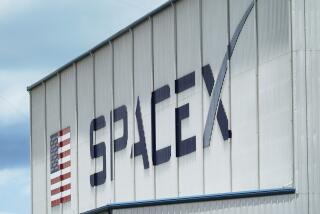Soaring Takeover Prices Causing Jitters
- Share via
Judging from the rapid descent of Computer Associates’ stock, Wall Street isn’t thrilled with the software firm’s apparent decision to offer up to $114 a share, or $9.8 billion, for a so-far uninterested Computer Sciences.
It’s not the absolute numbers that scare people--it’s the multiple: At $114 a share, Computer Associates would be paying 29 times Computer Sciences’ 1998 estimated earnings per share.
That may not seem like a lot in a market where many blue-chip stocks are priced at even higher multiples of earnings (think Coca-Cola, Gillette, etc.), but then, Computer Sciences’ assets mostly consist of brainpower--which can easily walk out the door, forever.
But if Computer Associates is pushing the envelope with its aggressive offer, it has plenty of company: As takeover mania continues to rage, the prices suitors are paying for their targets are reaching levels that many investment bankers regard as untenable.
“My view is that we’re getting to the point where it’s looking pretty toppy,” said Mark Shafir, a managing director in Merrill Lynch’s mergers and acquisitions unit in San Francisco.
In fact, the last time many veteran investment bankers remember feeling this queasy was in the late 1980s--prior to the collapse of that era’s wild, debt-fueled deal market.
The nominal value of takeover deals already far surpasses the 1980s peak of about $240 billion in 1988. Last year, the value of announced U.S. deals hit a record $657 billion, up 33% from 1996, according to MergerStat, a division of Los Angeles investment banker Houlihan Lokey Howard & Zukin.
The more relevant numbers, however, are the individual price tags. Consider one key yardstick of takeover prices: the deal price relative to the target’s cash flow, which is gross annual earnings before interest payments, tax payments, depreciation charges and amortization charges.
According to MergerStat, takeovers in the first quarter of 1996 had an average price-to-cash-flow multiple of 8.2. By the fourth quarter of last year, the average multiple was 11, an increase of more than one-third from 1996.
Is that too high? It’s all relative, of course: The stock market has soared over the last two years, and acquiring companies usually must pay premiums to their targets’ market prices to seal a deal.
What’s more, interest rates have slid since 1996, and that automatically makes stocks, overall, worth more versus the alternatives.
Finally, competition among buyers is intense. On one side are the “strategic” buyers, like Computer Associates--companies looking to boost market share, geographic reach, etc. by acquiring competing or complementary businesses.
*
On the other side are so-called financial buyers, such as leveraged-buyout funds, which acquire businesses using mostly borrowed money, then restructure or otherwise improve the operations and eventually resell them at (they hope) a much higher price.
Gary Finger, director of mergers for Houlihan Lokey, estimates that LBO funds hold between $70 billion and $80 billion in capital that could be used, with leverage, to make acquisitions worth five times that sum, or more.
But can that LBO money commit to deals at these prices? That question brings us back to the cash flow issue: The higher the price paid relative to the target firm’s cash flow, the greater the risk to a leveraged buyer that that cash flow won’t be sufficient to service the debt incurred and provide the high returns that LBO investors require.
Cash flow, remember, can be a cyclical thing. Should the economy slump, causing a company’s cash flow to dwindle while its debt remains high, disaster could ensue. (Recall the corporate bankruptcy wave of 1990-91, the “payback” for the deal mania of the late ‘80s.)
“Once you start talking about double-digit price-to-cash-flow numbers, they [financial buyers] are going to have a more difficult time participating” in the deal market, said Merrill’s Shafir.
But for the strategic corporate buyers--or at least the ones using their own shares to pay for a target’s stock, rather than borrowing--those limits don’t apply. As Jim Grant, publisher of Grant’s Interest Rate Observer newsletter in New York notes, “There is no particular pain associated with paying these multiples” when stock is the currency used.
That is, there is no immediate pain. The long-term risk is that a corporate buyer overpays for a target, the expected cash flow fails to materialize, and the acquiring company’s future earnings per share fall far below what investors anticipated, as earnings are spread over a much larger share base.
For now, however, the reaction of Computer Associates’ shareholders to its high-flying bid for Computer Sciences is the exception rather than the rule. In the buyout arena, Team It’s-OK-to-Pay-Up (a.k.a. Team Greed) still has a far larger cheering section than Team Fear.
*
Tom Petruno can be reached at tom.petruno@latimes.com
(BEGIN TEXT OF INFOBOX / INFOGRAPHIC)
Up and Away
The prices companies have paid for other companies are up sharply over the last two years. Average multiple of cash flow* in U.S. takeover transactions, by quarter:
Fourth-quarter 1997: 11.0
* Annual earnings before interest, taxes, depreciation and amortization
Source: MergerStat






